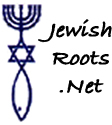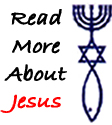






![]()
This is the eighth day of the holiday of Sukkot (Feast Of Tabernacles). The literal translation of Shemini (also spelled Shimini) Atzeret is the "Eighth Day of (solemn) Assembly." Even though it falls on the eighth day of the Feast of Tabernacles, Shemini Atzeret is often observed as a separate holiday. This also means that the requirements of building and eating inside of a Sukkah are no longer in effect.
Sometimes Shemini Atzeret is translated as "the eighth (day) of retention." It is, some rabbis say, used to retain and apply any spiritual thing that is received during the month of Tishri (Rosh Hashana, the Ten Days of Awe, Yom Kippur, etc.) They believe that it helps them to prepare for the coming year.(1)
Leviticus 23:39
This is also known as the last day of the Feast of Tabernacles. This day does take on its own identity. We gather at the synagogue to pray, specifically asking God to bless Israel with rain for the coming year. Shemini Atzeret is the rainy season in Israel. It is considered by many as a day of rest similar to the sabbath.
Some congregations (mostly in Israel) celebrate Shemini Atzeret and Simchat Torah on the same day. Outside of Israel it is more common to have two separate days. When viewed as two separate holidays, Simchat Torah should follow Shemini Atzeret.
Even though we are no longer obligated to eat in the Sukkah, some do so anyway to enjoy the opportunity one more day. For those who use the Sukkah one more day, there is no reason to use the lulav and etrog.
One of the biggest parts of this holiday is our prayer for rain. Even though some of us do not live in Israel, all still pray for Israel to receive rain. Sometimes this special prayer is referred to as Geshem.
A lot of the liturgy for this holiday is similar to Passover and Shavuot. These two holidays along with Sukkot made up the three feasts that were considered to be pilgrimage holidays. During these three holidays, people would try to make it a point to travel up to Jerusalem if they didn't live there. The reason for this pilgrimage was to get to the temple to take part in the festivities. These three holidays were huge social gatherings, where people camped out near the temple and fellowshipped together.
Rain is very important to Israel from a prophetic sense along with a physical sense. There is a tradition that if it rains on Shemini Atzeret, God will be favorable to Israel concerning rainfall for the whole year. There is another tradition, that God has put an angel in charge of the rainfall. His name is Af Bri. He gets his name from the two Hebrew words for anger and health. Anger because it might rain really hard like a flood and health because the rain brings health and prosperity as a result of what the rain helps grow in the farmers' fields. Jews today who use The Complete Art Scroll Siddur, a popular respected prayer book used by many orthodox Jews, still include this angel's name in the prayer for rain.(2)
The Rabbis are said to have explained the holiday this way: God is like a host, who invites us as visitors for a limited time, but when the time comes for us to leave, He has enjoyed Himself so much that He asks us to stay another day.
Many congregations read the Book of Ecclesiastes on this day.
Simchat Torah and Shemini Atzeret are connected because of the calendar. In Israel both are observed on the same day. It is possible that; Simchat Torah celebrations in the past have been observed at different times of the year.
According to the Talmud, the haftorah reading (reading of a prophet) for this event is 1 Kings Chapter 8 which relates how King Solomon blessed the people at the dedication of the newly erected temple, an event that is usually understood to have occurred on the eighth day of Sukkot also known as Shemini Atzeret.
The holiday focus on rainfall and what the water provides for Israel's crops. God's blessing is seen in the rainfall or His curse in a drought. Ezekiel compares God's voice to the sound of rushing waters. When it comes time to pray for rainfall, the customary liturgy reads, if we don't merit any rain because of what we had done then please give it to us because of what our fathers (Abraham, Isaac and Jacob) have done.
There is a Midrash (Story) that Moses was informed on Shimini Atzeret of his impending death. According to Tanchumah (Chukat 24), Moses waged his last battle on the twenty third of Tishri.(3)
Some people view Shemini Atzeret as the beginning of the next agricultural year.
There are some Bible scholars who believe that this day does not belong to the Feast of Tabernacles. Some feel it better serves as a conclusion to all of the feast mentioned in Leviticus 23.
Commentators Keil and Delitzsch write,
The eighth day was a solemn close of the whole circle of yearly feast, and
therefore was appended to the close of these last feast as the eighth day of the feasts itself.
This idea is also supported by the reductions in sacrifices.(4)
Rain was viewed as a blessing from God. Water was associated with living, life and the Holy Spirit. See what Messiah did symbolically during the Sukkah holiday by using the Water Libation Ceremony to declare His Messiahship.
Many Jewish people are unaware of things like the Water Libation Ceremony. Getting together to discuss how rain has effected Israel throughout its history could lead to a conversation on "Jesus providing living water." (John 4:10) It would be good to be able to pray together with your Jewish friends for Israel as a nation, to have favorable rainfall to help the country prosper. Israel now exports fruit all over the world.
Why not say a prayer to the Lord for it to rain when and where it is needed.
For a list of future holidays dates check the Master Calendar Table.
1). The Everlasting Nation. Nov/Dec. 2009.
2). The Complete ArtScroll Siddur published by Mesorah Publications, Ltd. (P.707).
3). Information from The Biblical And Historical Background Of The Jewish Holy Days, by Abraham P. Bloch is copyrighted material and was used with permission of the publisher. KTAV Publishing, 900 Jefferson Street. Box 6249, Hoboken, NJ 07030-0102.
4). The Fall Feasts of Israel by Mitch and Zhava Galser.